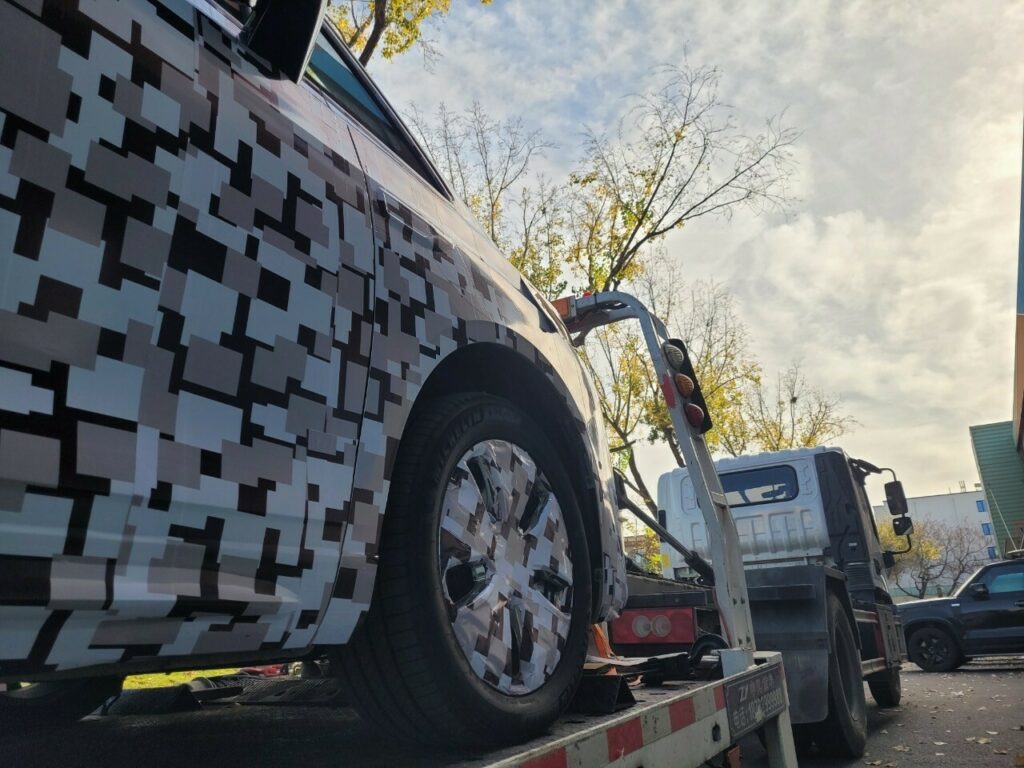- EVF startup Faraday Future has released the first teaser image of an FX prototype.
- It’s not clear if this is the FX 5 or FX 6, but the model appears to have styling that mimics the FF 91.
- Prototypes are headed to the US for testing and production could begin as early as next year.
Faraday Future announced plans for a mainstream brand earlier this year and now they’ve released the first teaser image of a Faraday X (FX) prototype. It’s probably one of the worst promotional photos in history, but it provides a glimpse of a camouflaged vehicle on the back of a trailer.
While there isn’t much to see, the mystery model has prominent wheel arches and door-mounted mirrors. They’re joined by an angular shoulder line, relatively small wheels, and a greenhouse that extends beyond the front doors. There also appears to be a protruding badge on the front fender.
More: Faraday Future Launches New Mainstream Brand To Offer Affordable EVs
Faraday didn’t say much about the vehicle, but confirmed the first FX prototypes have arrived at their Chinese headquarters and will eventually make their way to Los Angeles. The automaker added the shipment “marks the official launch of the development and testing phase,” and they’re aiming to become the “Toyota of the AIEV [Artificial Intelligence Electric Vehicle] era.”
Marketing hyperbole aside, the company previously announced plans for an FX 5 and FX 6. The former is slated to be a “large-space sporty AIEV” that costs between $20,000 and $30,000. The FX 6, on the other hand, will be a large family vehicle that’s targeted to occupy the $30,000 to $50,000 price range.
Both are slated to be offered with electric and range-extended powertrains, although nothing is known about them at this point. The company has also said production is slated to begin by the end of 2025, but this is “subject to securing necessary funding.”
On that note, Faraday’s forward looking statement was longer than the press release and highlighted numerous red flags including the company’s limited operating history, significant barriers to growth, history of losses, and expectation of continued losses.





